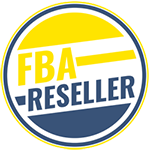Selling on Amazon is a lucrative opportunity for entrepreneurs, but success requires effective strategies. In this article, we will explore various tips and best practices shared by top sellers in the Amazon FBA (Fulfillment by Amazon) program. These strategies will help you boost your sales and achieve success in your Amazon business.
Key Takeaways:
- Implement proven strategies to excel in Amazon FBA.
- Follow the tips provided by top sellers to boost your sales.
- Maximize your success by applying Amazon FBA best practices.
- Achieving success with Amazon FBA requires dedication and effective strategies.
- Learn from successful sellers to thrive in the competitive marketplace.
Finding the Right Products to Sell
When it comes to succeeding with Amazon FBA, finding the right products to sell is crucial. Conducting thorough product research and exploring different niches will help you identify profitable opportunities. A great starting point for inspiration is the Amazon Best Sellers list, where you can analyze products that are already performing well in terms of sales.
As you conduct your product research, consider several factors to ensure you choose the right items to sell. Price is an important consideration, as it affects both profitability and competitiveness. Pay attention to customer reviews, as they provide valuable insights into the quality and satisfaction associated with a product.
Seasonality is another factor you should take into account. Some products may have higher demand during certain times of the year, which can impact your sales and profitability. Additionally, consider the size and weight of products, as these factors will impact storage, shipping costs, and logistics.
Niche selection is also essential. Finding a niche that aligns with your interests and target audience will not only make your work more enjoyable, but it will also give you a better understanding of your customers’ needs and preferences.
Before investing in inventory, it’s crucial to validate your product ideas. This can be done through market research, competitor analysis, and even crowd-funding campaigns. By gathering feedback and gauging interest, you can mitigate risks and ensure there is demand for the products you plan to sell.
In conclusion, finding profitable products requires thorough research and analysis. By leveraging the Amazon Best Sellers list, conducting product research, selecting the right niche, and validating your ideas, you can increase your chances of success with Amazon FBA.
Sourcing and Working with Suppliers
Once you have identified the products you want to sell, the next crucial step is sourcing them. Working with reliable suppliers is essential to ensure the quality, pricing, and timely delivery of your products. Here are some key factors to consider when sourcing and collaborating with suppliers:
Product Sourcing Methods
There are various methods you can explore for product sourcing:
- Wholesale: Purchasing products in bulk from manufacturers or distributors.
- Dropshipping: Partnering with suppliers who handle inventory storage and shipping on your behalf.
- Print-on-Demand: Creating custom products that are manufactured and shipped as orders are received.
Each method has its pros and cons, so carefully analyze which one aligns best with your business model and goals.
Working with Suppliers
When selecting suppliers, consider the following key aspects:
- Quality Assurance: Ensure your suppliers provide high-quality products that meet your standards and customer expectations.
- Price Comparison: Conduct thorough research and compare prices among multiple suppliers to secure the most competitive pricing for your products.
- Delivery Times: Collaborate with suppliers who can deliver products within your desired timeframe to maintain efficient fulfillment.
- Customer Service: Choose suppliers who prioritize excellent customer service and promptly address any issues or concerns.
- Inventory Management: Establish clear communication with suppliers regarding inventory availability and ensure they can meet your demand.
“Building strong relationships with your suppliers is vital for your long-term success. Regular communication, maintaining transparency, and fostering trust can lead to fruitful partnerships for years to come.”
| Benefits of Effective Supplier Collaboration | Challenges to Overcome |
|---|---|
|
|
Choosing the Right Sales Channels
When it comes to selling your products, it’s crucial to choose the right sales channels to effectively reach your target customers. By considering a variety of options, you can maximize your reach and increase your chances of success.
An Amazon storefront is a popular choice for many sellers. With its vast customer base and trusted reputation, selling on Amazon can give your products great exposure. By utilizing Amazon’s fulfillment services, you can also leverage their efficient shipping and customer service capabilities.
In addition to Amazon, setting up your own ecommerce website can provide you with more control and flexibility. This allows you to create a unique brand experience and engage directly with your customers. Consider investing in website design and optimization to enhance the user experience and increase conversions.
Social media platforms such as Facebook, Instagram, and Pinterest can also serve as valuable sales channels. Utilizing these platforms allows you to tap into a large audience and target specific demographics. By creating compelling content and engaging with your followers, you can drive traffic to your ecommerce website or Amazon storefront.
Don’t overlook the power of local sales channels. Depending on your product and target market, selling at local events, markets, or through local retailers can help you establish a presence in your community and connect with customers on a personal level.
When determining the right sales channels for your business, it’s important to consider the advantages and disadvantages of each. Evaluate factors such as reach, costs, competition, and the specific needs of your target audience.
To effectively reach your target customers, it’s also essential to invest in advertising. Both online and offline advertising can be powerful tools for driving sales. Explore strategies such as search engine marketing, social media advertising, influencer partnerships, and traditional advertising methods to promote your products and increase visibility.
The Power of Multi-Channel Selling
When it comes to sales channels, don’t limit yourself to just one. The power of multi-channel selling lies in diversifying your reach and maximizing your opportunities. By experimenting with different channels and finding the right mix for your business, you can increase your sales potential and target a wider audience.
Ultimately, choosing the right sales channels requires strategic thinking and experimentation. Continuously analyze and refine your approach based on customer feedback, market trends, and sales data. Don’t be afraid to adapt and evolve as you navigate the ever-changing landscape of ecommerce.
Understanding Listing and Selling Fees
When selling on Amazon, it is crucial to have a clear understanding of the fees associated with the platform. These fees include listing fees, selling fees, and additional costs that may vary depending on the products you sell and the fulfillment method you choose. By understanding these fees, you can better plan your pricing strategy and ensure profitability.
Listing Fees
Listing fees are charged by Amazon for each product you list on their platform. These fees vary based on the category in which your product falls. It is important to research and understand the specific listing fees for your product category to accurately calculate your costs.
Selling Fees
Selling fees are charged by Amazon when a sale is made. These fees are a percentage of the item’s price and can vary depending on your chosen selling plan. Amazon offers two selling plans: the Individual plan and the Professional plan.
The Amazon Individual plan is suitable for sellers who have a limited number of products or want to test the platform. With this plan, you pay a fixed closing fee per sale in addition to the selling fees.
“The Amazon Individual plan is the right choice for new sellers who want to keep their costs low and have fewer products to sell. It allows you to get started quickly and easily without a monthly subscription fee.” – John Smith, Top Amazon Seller
The Amazon Professional plan is ideal for sellers with a higher sales volume. This plan requires a monthly subscription fee but offers additional features such as bulk product listing and access to advanced selling tools.
“The Amazon Professional plan provides valuable resources for sellers who are looking to grow their business on Amazon. The additional benefits and tools available make it worth the monthly subscription fee.” – Jane Doe, Top Amazon Seller
Category Fees
In addition to listing and selling fees, certain product categories may have additional fees. These category fees are designed to account for the unique challenges and requirements of selling products within those specific categories. It is important to familiarize yourself with any category-specific fees that may apply to your products.
Fulfillment Costs
When using Amazon’s fulfillment services, such as FBA (Fulfillment by Amazon), there are fulfillment costs to consider. These costs depend on factors such as the size and weight of your products, as well as the duration they are stored in Amazon’s warehouses. Properly evaluating and factoring in these fulfillment costs is vital for your pricing strategy and overall profitability.
Inventory Fees
Inventory fees are associated with storing your products in Amazon’s warehouses. These fees are calculated based on the amount of space your inventory occupies and the duration it remains in storage. Efficient inventory management and monitoring can help minimize these fees and optimize your profitability.
By understanding the listing and selling fees, as well as other associated costs on Amazon, you can make informed decisions about your pricing, profitability, and overall business strategy. Take the time to research the fees for your specific product categories and consider which selling plan best aligns with your business goals. Being aware of these fees will enable you to maximize your success on the Amazon marketplace.
Optimizing Shipping and Fulfillment
Shipping plays a vital role in customer satisfaction and can greatly impact the success of your Amazon FBA business. To ensure a positive shipping experience for your customers, it is essential to optimize shipping methods, costs, and processing time. Meeting customer expectations is key to drive sales and build trust with buyers.
Competitive Shipping Costs
Offering competitive shipping costs is crucial to attract customers and encourage more purchases. Analyze the shipping costs of your competitors and adjust your rates accordingly. Remember to consider factors such as package size, weight, and destination when determining your shipping fees. Providing transparency in your shipping costs will help manage customer expectations and avoid any surprises during checkout.
Fulfillment by Amazon (FBA)
Fulfillment by Amazon (FBA) is a valuable service that allows you to leverage Amazon’s extensive fulfillment network. By using FBA, you can store your products in Amazon’s warehouses and benefit from their fast and reliable shipping services. Amazon FBA also enables you to qualify for the coveted Prime badge, which signals to customers that your products are eligible for Prime shipping. This badge boosts buyer confidence, improves visibility, and increases the likelihood of sales.
Shipping and Processing Time Expectations
Understanding shipping and processing time expectations set by Amazon or your own fulfillment process is crucial for providing excellent customer service. Amazon has specific guidelines regarding shipping and processing timeframes that you need to adhere to in order to maintain your seller metrics. Promptly process and ship orders within the designated timeframe to meet customer expectations and enhance their shopping experience.
Additionally, consider setting realistic processing timeframes based on your business capabilities. Clearly communicate the estimated shipping and delivery timeframes to customers on your product listings. This transparency will manage customer expectations and reduce the risk of negative feedback or returns due to shipping delays.
Customer Expectations
Meeting or exceeding customer expectations is vital for generating positive reviews, building customer loyalty, and driving repeat purchases. Customers expect their orders to be delivered on time and in good condition. Ensure proper packaging to protect products during transit and minimize damages. Regularly communicate with customers, provide tracking information, and address any concerns promptly to provide exceptional customer service.
| Shipping Method | Delivery Time | Shipping Costs |
|---|---|---|
| Standard Shipping | 3-5 business days | $5.99 |
| Express Shipping | 1-2 business days | $9.99 |
| Free Shipping (for orders over $50) | 5-7 business days | Free |
Creating High-Quality Product Listings
To attract customers and increase conversions, it’s crucial to create captivating product listings that stand out. Here are some essential tips to help you optimize your listings:
1. Product Imagery
Use high-quality product imagery to showcase your products in the best light. Optimize the visual representation of your offerings by choosing well-lit images that highlight unique features. Incorporate lifestyle shots to help customers imagine using the product in their own lives. Ensure your images are crisp and engaging to capture the attention of potential buyers.
2. Photography Tips
Follow these photography tips to create visually appealing product images:
- Use a clean and uncluttered background to keep the focus on the product.
- Experiment with different angles to showcase various product details.
- Include images that demonstrate the product’s size, dimensions, and packaging.
- Utilize props and context when appropriate to enhance the visual appeal.
3. Video Content
Incorporating video content in your product listings can significantly impact customer engagement and conversions. Videos provide a dynamic way to demonstrate product features, show usage examples, and create an emotional connection with your audience. Consider including product review videos, unboxing videos, or how-to demonstrations to enrich the buyer experience.
4. Optimization for Amazon Search
To improve visibility on Amazon, optimize your listings using keyword research. Identify relevant keywords that align with your product and target audience. Incorporate these keywords strategically in your product titles, bullet points, and descriptions to enhance discoverability. Ensure that your content is concise, informative, and easy to read for both customers and search algorithms.
5. Keyword Research
Conduct thorough keyword research to identify the most relevant and high-converting terms for your products. Utilize Amazon’s built-in keyword research tools or third-party keyword research tools to uncover popular search terms in your niche. Optimize your listings by incorporating these keywords naturally throughout your product content, helping potential customers find your products more easily.
By implementing these tips, you can create high-quality product listings that not only attract customers but also drive conversions. Remember to regularly update and optimize your listings based on customer feedback, market trends, and changes in your product catalog.
Implementing Effective Marketing Strategies
Successful sellers understand the importance of marketing their products. In the competitive world of e-commerce, having a well-defined marketing strategy is crucial for driving sales and gaining an edge over competitors. To maximize the exposure of your products and reach a wider audience, consider implementing the following effective marketing strategies:
Utilize Amazon Advertising
One of the most effective ways to promote your products on Amazon is through Amazon Advertising. Take advantage of Amazon’s Sponsored Product Ads feature to increase visibility and drive traffic to your listings. By targeting specific keywords and optimizing your ad campaigns, you can attract potential customers who are actively searching for products similar to yours. Additionally, consider using A+ content to enhance your product descriptions and provide customers with a more engaging browsing experience.
Explore External Marketing Channels
While Amazon advertising is essential, don’t limit your marketing efforts solely to the platform. Expand your reach by leveraging external marketing channels such as Google Ads and social media platforms. Create targeted ad campaigns that align with your target audience’s interests and demographics. Social media marketing can be particularly effective in building brand awareness and engaging with potential customers. Tailor your messaging and content based on the platform and the preferences of your target audience.
Build Brand Awareness through Effective Branding
Establishing a strong brand presence is vital for long-term success on Amazon. Develop a cohesive brand identity and ensure consistent branding across all your product listings. Invest in eye-catching product imagery that showcases your brand’s unique selling points. Captivating visuals can attract potential customers and differentiate your products from others in the marketplace. Also, take advantage of Amazon’s image-led browsing feature by using high-quality images that highlight your products’ key features.
Branding isn’t limited to your product listings alone. Incorporate your brand’s messaging and visual elements into your packaging, follow-up emails, and social media channels. This creates a cohesive and memorable brand experience that helps establish trust with your customers and encourages repeat purchases.
Remember, effective marketing strategies involve a combination of on-platform and off-platform initiatives. Experiment with different channels and tactics to find what works best for your business, and regularly analyze and optimize your campaigns to drive continuous improvement and achieve maximum results.
Conclusion
Achieving success in the Amazon FBA program requires implementing proven strategies. By following the tips and best practices shared by top sellers, you can boost your sales, establish a strong brand presence, and thrive in the competitive marketplace.
Continuously refine your selling strategy, staying updated with market trends, and exploring new opportunities will help you stay ahead of the competition. With determination and effective strategies, you can achieve success in your Amazon FBA business.
Remember to focus on optimizing your product listings, leveraging the right sales channels, and incorporating effective marketing strategies to reach your target audience. Stay committed to delivering high-quality products and ensuring excellent customer service.
By incorporating these success strategies and staying dedicated to your Amazon FBA business, you can unlock its full potential and create a thriving and profitable venture.

Ryan Conlon, a seasoned entrepreneur and e-commerce expert dedicated to helping resellers thrive in the dynamic world of Amazon FBA. With years of hands-on experience and a passion for sharing knowledge, Ryan is your trusted guide on the journey to reselling success. His commitment to providing valuable insights, strategic tips, and actionable advice is the driving force behind FBAresellers.com


